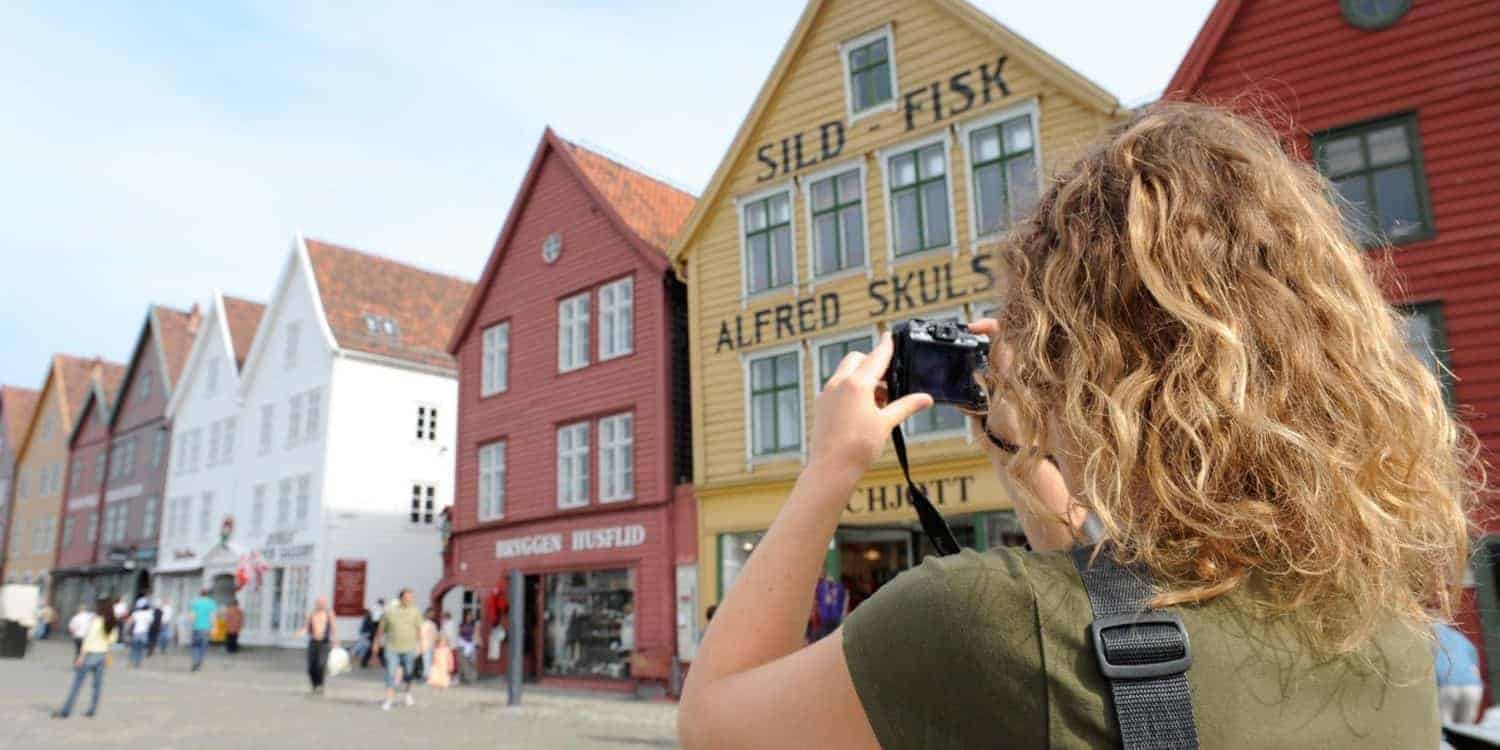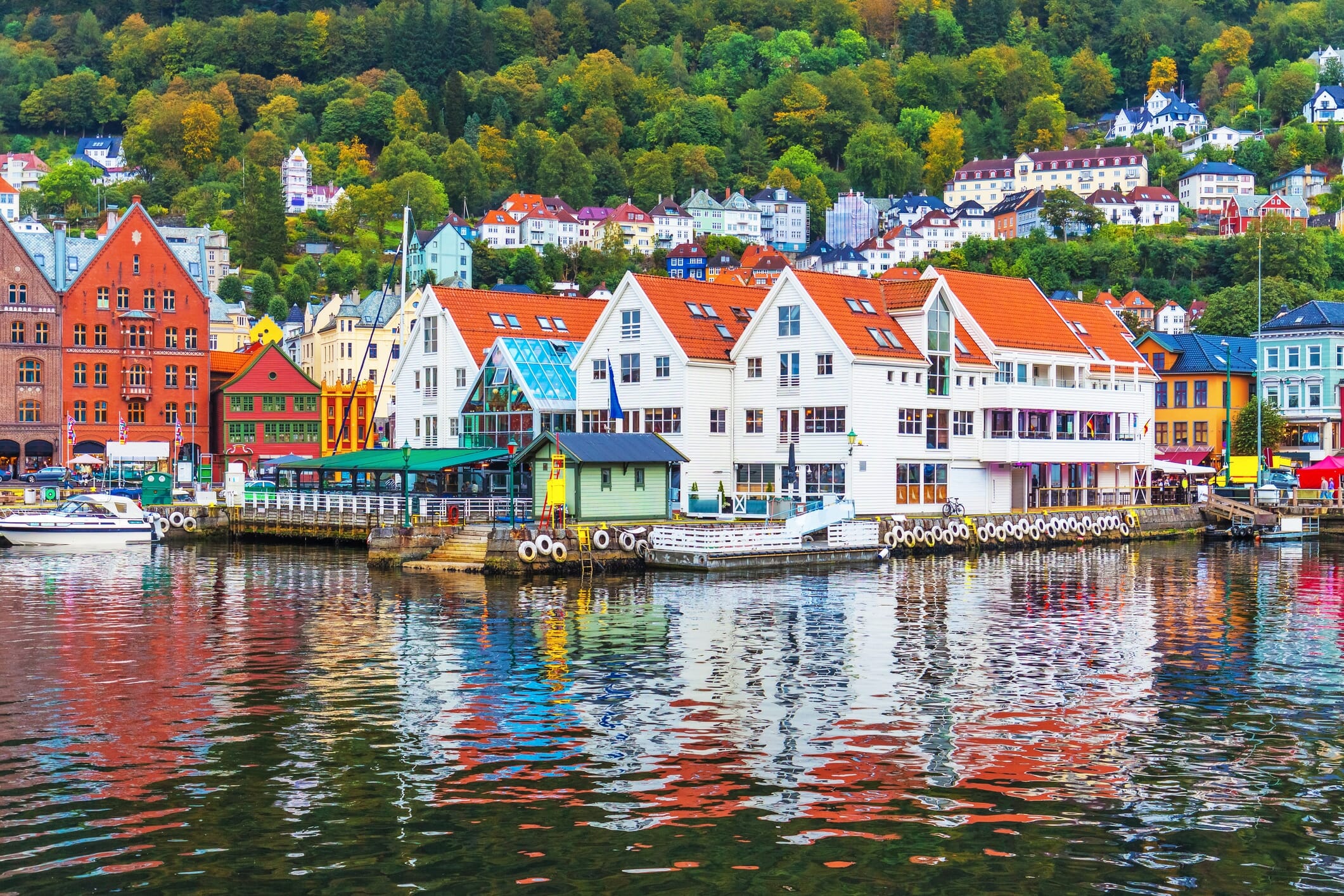Bryggen in Bergen in Norway what an amazing place
The old Hansestad Bergen proudly bears the nickname “The gate to the fjords”. But the beautiful city is much more than a “gate” to somewhere. The city boasts a proud history, a rich cultural life and an intimate city center – beautifully surrounded by seven mountains and several islands.

Bergen as a Hansestad
As a guest in Bergen, you must not miss Bryggen. The row of wooden houses was built in the Middle Ages and has since been rebuilt several times after fires. Bryggen is a UNESCO World Heritage Site and is reminiscent of Bergen’s historic connection to the Hanseatic League, an organization founded by northern German cities and German trading companies to protect their mutual trade interests. Bergen was Norway’s leading trading city and exported goods from the western and northern coastal communities. Bergen was Norway’s largest and most international city until the 19th century.
Sip a glass of wine and see the ships come in and out
The pier is beautifully situated along the bay Vågen as the center of Bergen. From here you can follow which ships come in and sail out, you can see people going to the fish market, going to work and shopping, and you can see the Fløibanen run up and down the mountain. After the last major fire in 1955, Bryggen was the subject of archaeological research that documented the existence of the former trading community. The pier is protected and fireproof and even has its own museum.

History and background
Bryggen is a historic harbor district in Bergen, one of North Europe’s oldest port cities on the west coast of Norway which was established as a center for trade by the 12th century. In 1350 the Hanseatic League established a “Hanseatic Office” in Bergen. They gradually acquired ownership of Bryggen and controlled the trade in stockfish from Northern Norway through privileges granted by the Crown. The Hanseatic League established a total of four overseas Hanseatic Offices, Bryggen being the only one preserved today.

Bergen and Brygge in Norway, Unesco site
Bryggen was often damaged by fires but always came back
Bryggen has been damaged by a number of fires through the centuries and has been rebuilt after every fire, closely following the previous property structure and plan as well as building techniques. Bryggen’s appearance today stems from the time after the fire in 1702. The buildings are made of wood in keeping with vernacular building traditions. The original compact medieval urban structure is preserved with its long narrow rows of buildings facing the harbor, separated by narrow wooden passages. Today, some 62 buildings remain of this former townscape and these contain sufficient elements to demonstrate how this colony of bachelor German merchants lived and worked, and illustrate the use of space in the district. It is characterized by the construction of buildings along the narrow passages running parallel to the docks. The urban units are rows of two- to three-story buildings signified by the medieval name “gård”. They have gabled facades towards the harbor and lie on either one or both sides of the narrow passages that have the functions of a private courtyard. The houses are built in a combination of traditional timber log construction, and galleries with column and beam construction with horizontal wooden panel cladding. The roofs have original brick tiling or sheets, a result of fast repairs after an explosion during World War II. Towards the back of the gård, there are small fireproof warehouses or storerooms (kjellere) built of stone, for protection of special goods and valuables against fire. This repetitive structure was adapted to the living conditions of the Hanseatic trading post. The German merchants took up winter residence in the small individual wooden houses and the storerooms were used as individual or collective warehouses. A true colony, Bryggen enjoyed quasi-extraterritoriality which continued beyond the departure of the Hanseatic merchants until the creation of a Norwegian trading post in 1754, on the impetus of fishermen and ship owners of German origin. Today, Bryggen is a significant part of the historic wooden city of Bergen.
Source; Unesco World Heritage sites where Norway has 8 on the list.
Read more here about Northern Norway and about sailing in the Norwegian fjords with the Hurtigruten.
A selection of best places to visit in Norway
Some of the most beautiful places to visit in Norway
Travel to Norway
The Atlantic Road in Norway, perhaps the world’s most spectacular stretch of road.
https://vacationtalks.com/the-atlantic-road/
The magnificent Western Norway in Norway
Charming and laid-back Bygdøy in Oslo
https://vacationtalks.com/bygdoey/
Mountain hiking in Norway
The incredible northern lights in Norway
https://vacationtalks.com/bygdoey/




